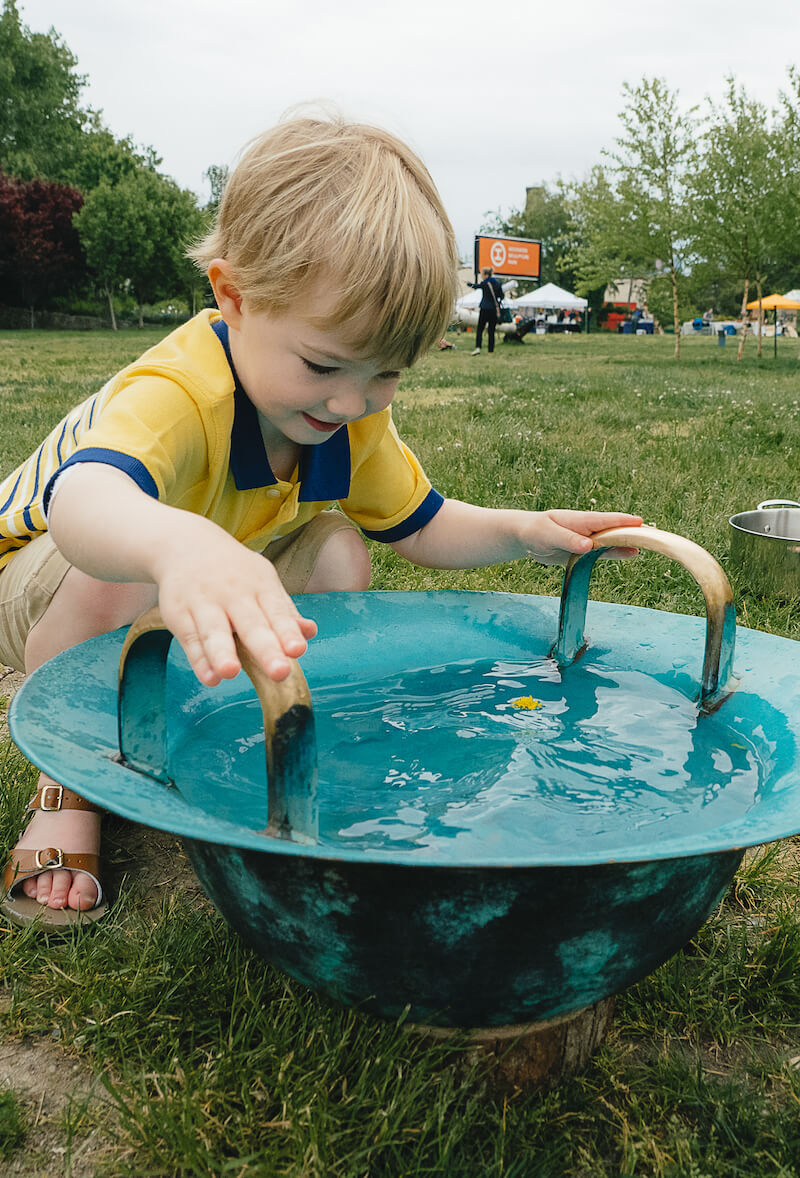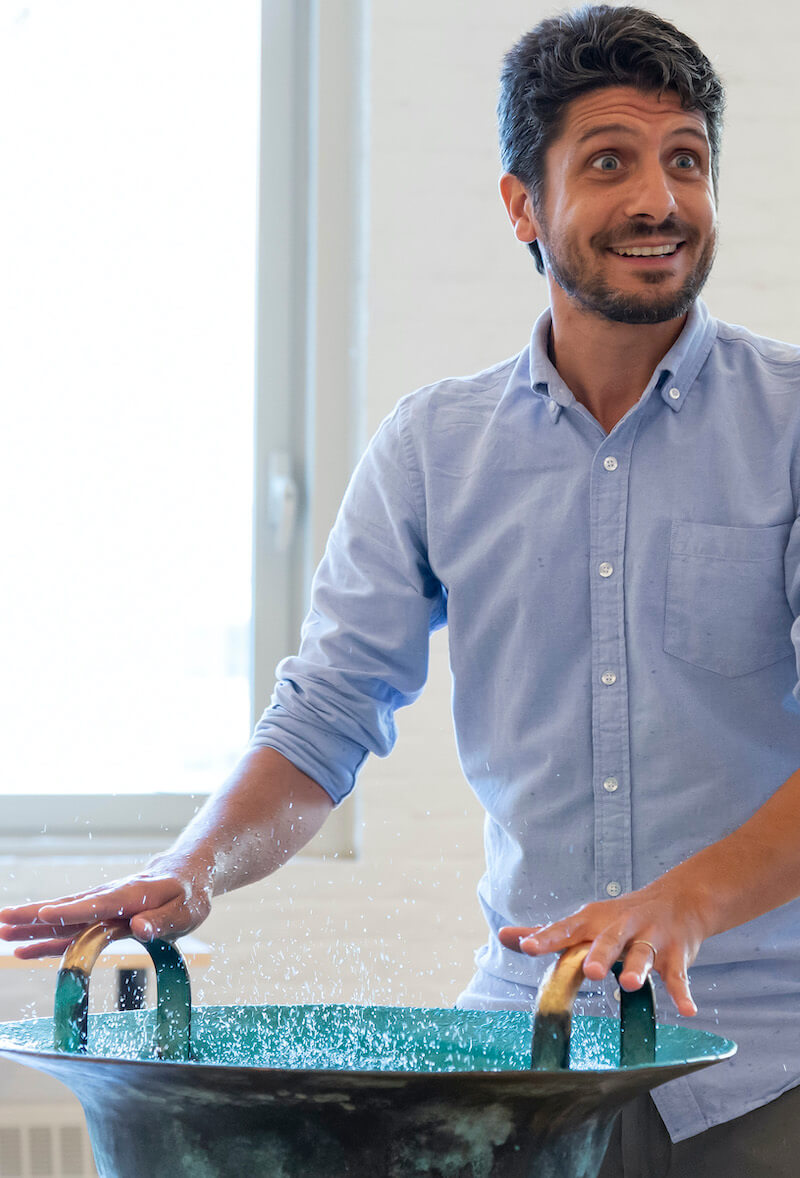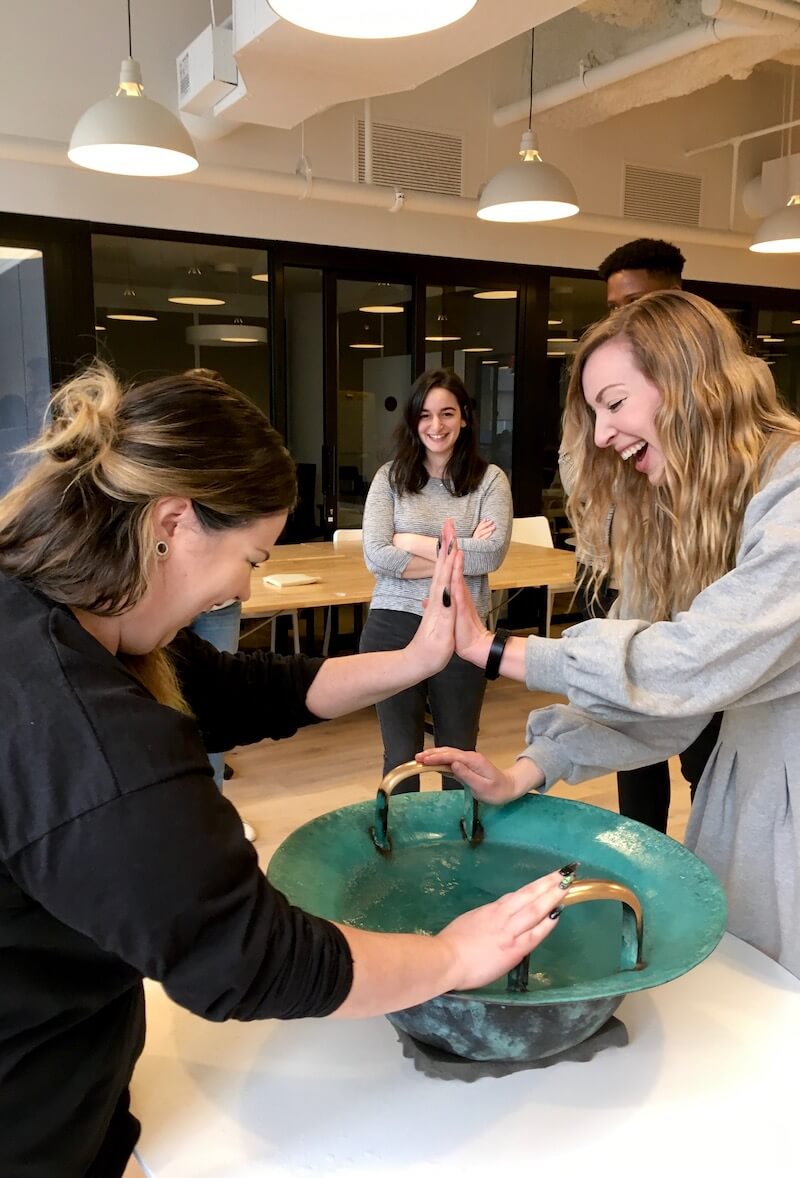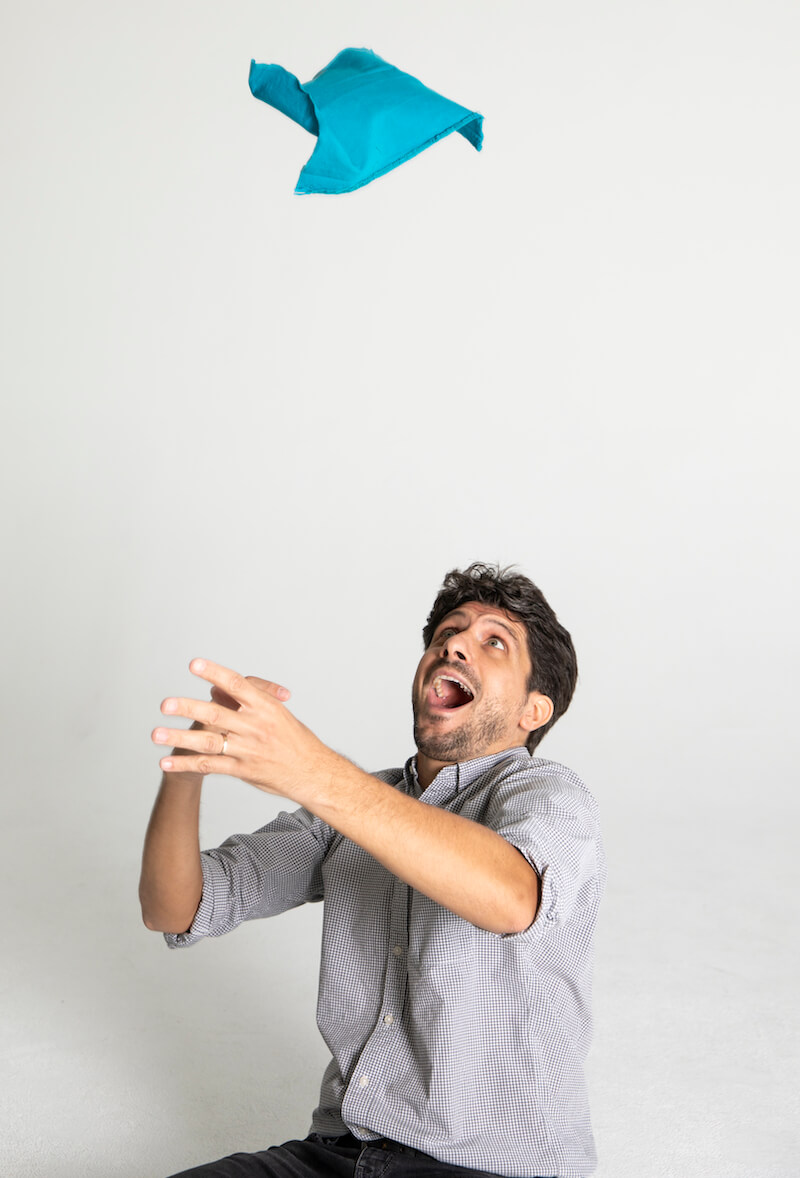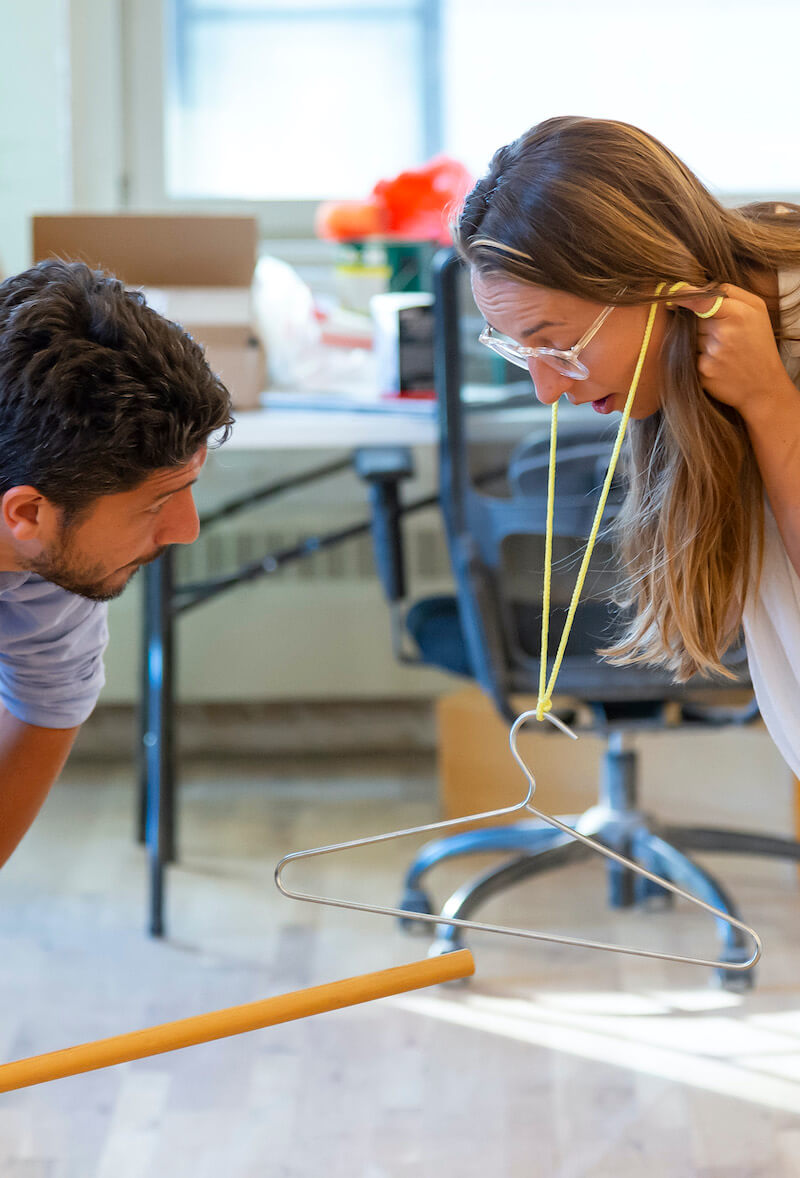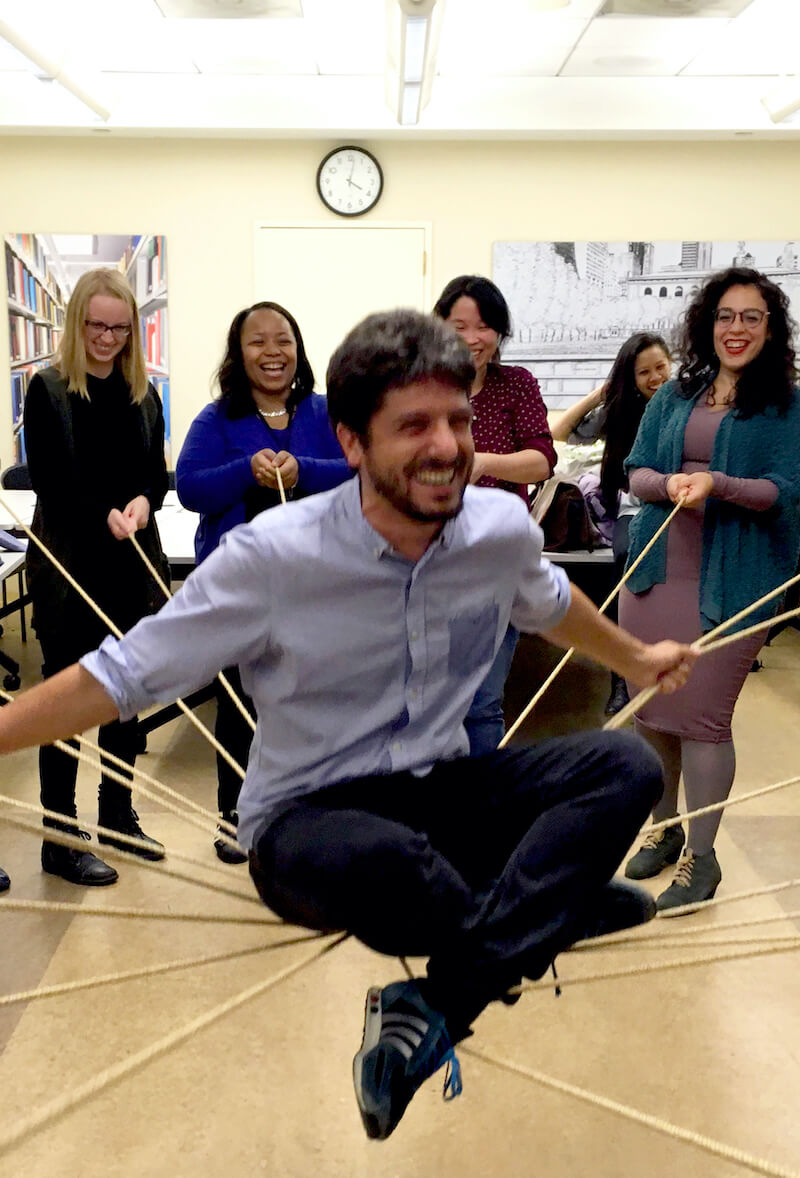Embodied Learning is an Educational Method Given to Us by Children
An Interview with Tommaso Lana, founder and facilitator of the
New York-based boutique consultancy Embodied Learning,
amid the COVID-19 Pandemic
Tommaso came to me with an idea. “What if every adult has a talent that hasn’t been nurtured – and they need to tap back into memories of playing around in the yard as a child to learn how to use it?”
Such a specific idea gave me pause, and he elaborated: “Children are unique, talented individuals – and they all learn by doing. Overthinking is an adult problem. Children use their bodies to perceive, sense, and move through life, while as adults we try to think or speak our way through life. Somewhere along the way, we lose the ability to learn by using bodily skills that were innate to us once before.”
As a science communicator with a background in neuroscience, I found the theory fascinating and wanted to know more. I sat down with Tommaso to chat about what “embodied learning” actually meant and how we could learn about it by observing children. The discussion that follows is an abbreviated version of our conversation about life, and how we learn throughout it.
LP: To me, ‘embodied learning’ is a concept that offers a way for adults to gain self-awareness, and find their inner voice. The idea is that while growing up, we learn by doing, not reading, and as we grow older, we do less and read more. During this, we lose our innate sense of physicality in the world, leading us to communication breakdown as we depend on words more and body language less. Am I right in summarizing that?
TL: Yes – it’s fascinating. And embodied learning simply means gaining access back to those tools that we used so easily earlier in life. Learning through experience is built-in from birth. Think of baby sea turtles finding the ocean, or of toddlers grasping new languages. Learning by doing is innate, and as we grow up we stop doing as much.
LP: I never really thought about it until you said it, but it is true that we rarely use our bodies to learn, and generally move less as we grow up. What happened when you personally realized this?
TL: Let’s start with an anecdote. In my childhood, I felt like I had no voice. I would hang back in conversations, feeling uncertain and unable to express my opinion verbally while everyone around me chatted away. I realized I needed more time than others to feel secure in what I would say. But, I knew I could use my body to convey a message very quickly. While I studied the oboe at age 22, I focused on the physical work – lungs, lips, breathing, and posture. This got me thinking.
Embodied Learning Refers to Pedagogical Approaches that Focus on Everyone’s Innate, Autonomous Competence – Physical, Emotional, and Cognitive – to Build Learning Processes
Our body is the first educational system we experience
A self-directed system inherited from thousands of years of evolution. We come into ourselves by activating the part deep in our brains that teaches us how to survive. How to express genuine emotion. How to dance. When we’re young, we communicate physically. We play, cry, jump for joy or run around in nature. around the room. Adults do all of these things less often. As we grow up, cultural and social structures influence us. We become more verbal, and lose touch with that physical element. Body language is no longer the universal language.
LP: So you’re saying that we lose access to a deeper connection to ourselves, and the world around us, as we use our bodies less and rely on our words more.
TL: Yes. I believe the beginning of the end of our natural embodied learning processes is when we begin our formal school years. The focus shifts from the joy of experiencing life to curriculums, grades, and pressure to conform. People lose their learning independence.
LP: In the time of Covid, it feels like both physical play and traditional education have come up against a wall. Both parents and kids are stuck at home. No one is moving their bodies as much, and while no longer bound by the traditional structures of work and school, screen time is higher than ever and physical connection is currently “not recommended”.
TL: You mentioned Covid is like a wall. Well, I have a story of a wall. In Milan, Italy in the 1870s, a group of German-Swiss schoolchildren, who attended the German-speaking community school, learned Italian and the Milanese dialect very organically. They did it by hanging over their schoolyard wall during recess and interacting with the passers-by. Their parents had instructed teachers to strictly prohibit this, as to protect the children from strangers, but adults can’t stop children from playing and learning. These children eventually grew up and succeeded in Milan as revolutionary entrepreneurs and influential politicians despite their parents’ desire for them to not learn Italian. For many adults, Covid made them feel like their life is on pause. That’s why they’ve decided to put a pause on their children’s life. This shows how adults became incredibly unfamiliar with natural physical expression and bodily needs in our species.
LP: I don’t have children, so I don’t fully understand the struggle between caring and infringing on a child’s ability to learn by doing. Can you elaborate on what that’s like, and why adults should pay attention?
TL: It’s an illuminating time because we are seeing adults take over children’s autonomous ability to live. Covid asks the question: what are we gaining by hyper-protecting our children more and more over the last few decades? Over-protective parents might schedule their children’s time down to the minute, or never allow them to play outside.
Many adults systemically and unwittingly silence their children’s voices – and their innate, autonomous learning abilities. Parents don’t trust them or project their fears onto them. Of course, I’m not disregarding the safety of a child, but it’s an interesting perspective of how a child loses independence in the name of caring. Adults should instead learn from watching their children interact with the world as it is, instead of how they think it should be.
LP: You’re implying that there is a “knowledge gap” between children and adults that is in the form of learning through physical and emotional learning, and what’s lost is the innate ability to communicate through body language. Learning is a physical and emotional act. Is this where the idea for Embodied Learning as a company comes from?
TL: Yes, following in the German-Swiss kids’ example, I decided to put physical and emotional learning at the core of my approach to my professional career. I’m also “embodying” my childhood by revisiting my own communication challenges, and believe embodied learning is a very powerful tool that all adults can benefit from. That’s the focus of my business now – bringing physical and emotional learning experiences to adults who are missing them, or missed them in their early childhood. Tapping back into the innate form of learning can bring out talents in people they might not have known they had before!
LP: So you can teach an old dog new tricks. What’s an example of how you might help people “reconnect” with the language of their bodies?
TL: One of the first questions I ask people is: “Can you touch your toes, sitting on the ground or standing, while keeping your legs straight?” Some can, some can’t. It doesn’t matter. The point is that it triggers a moment of reflection. A moment that requires checking in on their current physical presence, something that can’t be out-thought. This might be the only moment of awareness in the day where they reflect on their body.
LP: No, you certainly can’t think your way into touching your toes if you aren’t flexible enough to do so. Literal moments of “embodied learning” like this must be a humbling experience for some people. They might realize they have lost a physical ability they once had, or have a positive affirmation if they’ve retained it.
TL: What’s important to remember is that the body and the mind are the same. If you don’t stretch regularly and work on your mobility, specific physical abilities – like touching your toes – go dormant. As the average person enters adult life, many other functions and abilities of their brain also go dormant. We need to give people the tools to teach themselves, to “wake up” their bodies and minds, and enrich themselves in the things they’re interested in. One way you can do it by tapping into the environment in which they spent their formative years, 0 – 8 years old. If you ask someone what happened to them during that time, it will likely define how they see the world.
LP: Neurons that fire together, wire together. I mean, the prefrontal cortex isn’t even fully developed until 25. So you could even say formative embodied learning years are through that time. Because young people naturally embody the environment they live in, be it positive or negative. Is that why it’s so important for children to have their freedom to learn autonomously during those years?
TL: Right, those are the defining years of our lives. If adults raise children in an environment where they don’t feel safe, they likely won’t always feel safe once they are adults. Embodied learning can help us re-educate ourselves as adults and bring awareness to what got lost: using a talent, pursuing a childhood dream, or working through some tough issues. There’s a sense of success when you’re able to finally reach out and grab those things experientially. You are happy to have completed the process. Who benefits from that transformation is not only yourself but the people who work and live with you.
LP: It seems like nearly everyone can gain a lot from embracing this innate, emotional embodied learning. We never stop learning from our experiences in the world – so thriving in our bodies is just a complementary way of doing so. Maybe all adults can benefit from bringing out their inner kid once in a while!
TL: From an emotional and social intelligence standpoint, they really can. There’s something awe-inspiring about witnessing physical and emotional learning happen, and seeing my clients learn and change in front of my eyes. Particularly for those who are those colleagues, embracing embodied learning is immediately beneficial to them. By connecting with each individual, and appreciating each person’s unique way of learning, there are improved communication, relationships, and performance in the workplace. People feel listened to and understood, which is something we all want from a job, don’t we?
LP: I know that I do. And I also know that I’ll be taking all of this information with me into my workplace!

About the Author
Lauren Parikhal
In the era of “information overload” coupled with deliberate “misinformation,” it’s more difficult than ever to determine who’s telling the truth about science, what to pay attention to, and how any of it actually applies to your life.
Science Summarized founder Lauren Parikhal is a neuroscientist-turned-writer who believes in science’s power to influence people when communicated in a succinct and engaging way (read why she believes that is important here).
Lauren is a published journal author from her time as an MIT researcher and has worked as a PR and communications professional for global biotechnology, healthcare and pharmaceutical companies.
Get In Touch
Contact
+1 929 262 8555
tom@embodiedlearning.co

